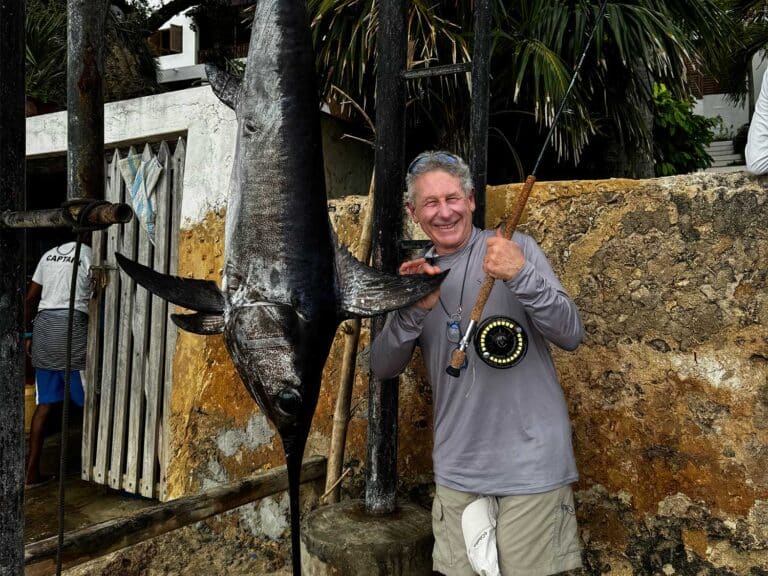Shop This Video at CaptHarry.com
Moldcraft Hoo Hooker Lure (5 pack): $14.95 click here
Sampo Barrel Swivels: $2.35 click here
Mustad 9/0 39951NP-BN Circle Hooks (25 pack): $14.25 click here
Copper Rigging Wire 14-inch (1-pound tube): $42.95 click here
When trolling a standard dead-bait spread of circle hook-rigged ballyhoo, anglers often need to incorporate a bit of extra color and a splash of action. This is especially important when targeting blue marlin, which seem to have an easier time homing in on a bait that creates more commotion in the spread. Here’s how to rig a ballyhoo for success.
Small chugger heads are made by Moldcraft, Fathom, Squidnation and others, and they come in a wide variety of colors. Some are cup-faced while others are flat-faced, so the choice is up to the angler or deckhand. One benefit of using a swivel in this rig rather than simply tying the bait to the hook with rigging floss is that the swivel will allow the bait to spin freely without binding up when being trolled. Most pros recommend trimming chugger heads with longer skirts down to a much shorter length. This prevents the skirts from fouling in the circle hook on the bite, possibly resulting in a lost fish. Otherwise, treat this bait the same as you would a standard circle-hooked ballyhoo when it comes to the amount of drop-back once a fish strikes.
It’s also important to use a swivel that will just barely fit over the barb of your preferred circle hook. A swivel that’s too loose can pop free of the hook, especially in rough conditions when the bait might flop around a bit on the surface. The swivel should need to be carefully forced over the barb of the hook. To remove the bait from the hook, use a pair of sharp cutters to clip the swivel off the hook.







